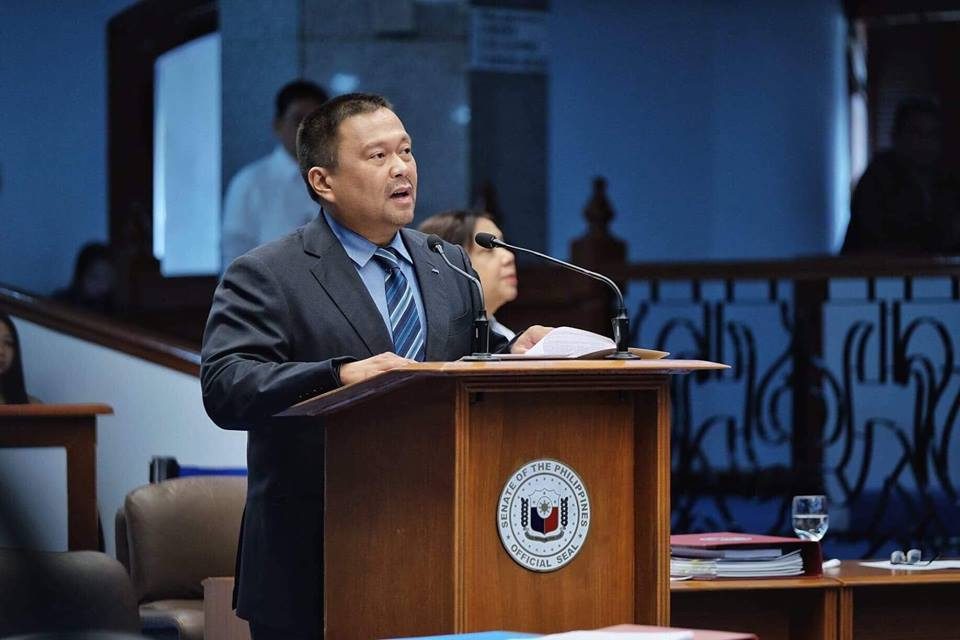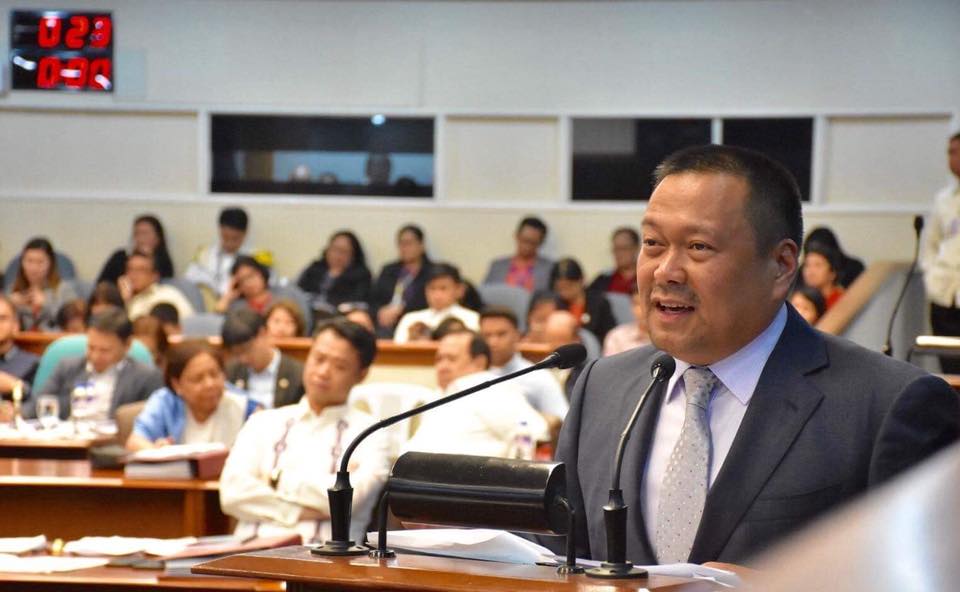Mr. President, as a father, road safety advocate, and legislator who deeply cares for the health and well-being of our citizens, especially our children who are the future of this nation, it is with great honor, as Chairperson of the Subcommittee on Special Protection for Child Passengers under the Senate Committee on Public Services, that I stand to sponsor and seek your support for Senate Bill No. 1971 under Committee Report No. 427 entitled “AN ACT PROVIDING FOR THE SPECIAL PROTECTION OF CHILD PASSENGERS IN MOTOR VEHICLES AND PROVIDING APPROPRIATIONS THEREOF”.
At this juncture, Mr. President, allow me to thank the Chairperson of the Committee on Public Services, Senator Grace Poe, for giving us the opportunity to hear and sponsor this important measure that is not only a transportation safety issue but also a health concern.
Mr. President, this bill aims to provide protection to infants and young children from deaths and serious injuries caused by road crashes and traffic related incidents by mandating the use of Child Restraint System in motor vehicles.
Mr. President, data from the Philippine Statistics Authority show an alarming trend in the deaths of children due to road crashes. For a period of nine years from 2006 to 2014, 5,960 children died due to road crashes. This translates to an average of 662 deaths per year or 55 deaths per month or 1 death per day. These numbers are conservative estimates given the lack of comprehensive data collection involving road crashes in the country.
Data from the Metro Manila Development Authority reveal that the top vehicle type involved in the recorded Metro Manila road crashes in 2017 was CAR resulting in the injury of 7,861 people and the death of 97 individuals.
Fortunately, we have a preventive tool we can use to avoid this road-related incidents. Mr. President, a child car seat or child restraint system reduces the likelihood of a road crash fatality by approximately 70 percent among infants, and between 54 percent and 80 percent among young children.
Appropriate child restraints are specifically designed to protect infants and young children during a collision or a sudden stop by restraining their movement away from the vehicle structure and distributing the forces of a crash over the strongest parts of the body, with minimum damage to the soft tissues.
While we have a law on mandatory use of seat belts, it only protects adults in the event of road crashes. Seat-belts are not designed for children and do not offer the protection they provide adults.
Under the proposed bill, Mr. President, drivers of private vehicles are mandated to properly secure a child aged 12 years and below in a child restraint system or CRS while transporting such child on any road, street, or highway.
The child restraint system shall be appropriate to the child’s age, height, and weight, and approved in accordance with the Safety Standards for Child Restraint System prescribed in Section 6 of this Bill.
Mr. President, this bill if enacted will also prohibit the mere act of leaving children unattended inside motor vehicles even if they are wearing child restraints systems. This is to address the increasing incidents of children being left alone in motor vehicles to the detriment of the said child. The most famous of this incident occurred last July 2018 in Metrowalk, a commercial hub in Pasig City, wherein a two-year-old boy was left for several hours inside their family’s car. This act should not be acceptable as this might endanger the health and life of the child.
The bill also improves on the current prohibition in the Seat Belt Law wherein children six years old and below are prohibited to sit at the front seat of any running motor vehicle. We are increasing the age limit to 12 years old because numerous studies have shown that the bone development of children 12 years old and below is not yet complete. The safest place for children inside a motor vehicle is at the back seat for it is farthest from the impact of crashes.
Finally, Mr. President, to protect children who are using public utility vehicles, the Department of Transportation is mandated to adopt safety measures and issue regulations for the safe and secure transportation of children in public utility vehicles after conducting a thorough study after the enactment into law of this bill.
Mr. President, I know the main concerns of our people would be the cost and availability. According to the UP National Institutes of Health, 178 car seat brands are already available in the Philippine market, with price ranging from P1,200 to P25,000. Mr. President, we all want our kids to be safe at all times. And since road crashed are unpredictable, it pays to be proactive.
Mr. President, with the permission of the body, please allow me to show you a short video.
play video
While some people might hesitate on the additional spending, we should be mindful that no price can compare to a child’s life that is at stake every day on the road. Spending for additional safety measures will be nothing compared to the cost of injuries of a crash.
Mr. President, as I sponsor this measure, I am thinking of the safety of my children, your children and all the Filipino children.
The Philippines already passed 6 out of 7 interventions related to key risk factors on road safety. These laws are the Speed Limit Law (R.A No. 10916), Anti-Drunk and Drugged Driving Law (R.A No. 10586), Motorcycle Helmet Law (R.A No. 10054), Seat Belt Law (R.A No. 8750), and the Anti-Distracted Driving (R.A No. 10913). Other supporting road safety laws include Senate President Sotto’s Children’s Safety on Motorcyles Act of 2015 (R.A. No. 10666), which barred children from riding motorcycles along national and provincial highways.
The only measure left is the Child Restraint Law, which shall seal the deal for us in our effort to promote and ensure road safety for all ages, and also in fulfilling the road safety targets as reflected in the newly adopted 2030 Agenda for Sustainable Development. According to the World Health Organization, 53 countries already have child restraint law.
Mr. President, as we deliberate this measure, I call on our colleagues in this chamber to heed the words of Wade Hampton Frost, the father of modern epidemiology: “A statistic is not just a number, it is a number with a teardrop with it.”
What lies within our hands is the power to eliminate the statistics of death and injuries, and the accompanying teardrops of orphans, widows, and parents. It is within our power to slay the silent killer of this nation’s hope and future.
To end, I urge the member of this august chamber to support the immediate passage of this bill.
Thank you, Mr. President.



